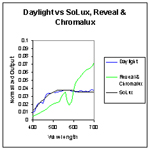I wonder what the truth is about the danger of getting AIDS from such things as sneezes or toilet seats. The danger can't be too great, or we would come across numerous cases where that method of transmission could be proved. On the other hand, I am skeptical of the claims that no such cases occur. Would someone making that claim really be willing to share a handkerchief with someone in the last stages of AIDS? In the scientific literature, look carefully for language such as "No cases have been found..." or "No cases have been proved...", as opposed to "It is impossible to have transmission by ...". I haven't heard of any experiments on the subject. What would be useful would be to see if an animal can be infected without direct contact with an infected animal. Animals cannot be infected with the same HIV virus as humans, but even moderate similarity in the viruses would tell us something.
It isn't widely known that the HIV virus has a remarkable ability to survive outside of a human body. It can even survive drying! This implies, doesn't it, that it must be common for measurable amounts of HIV virus to be transmitted enviromentally. Since we don't see cases of that, it must be that the virus can't get where it needs to go in the body (e.g., maybe it can't get through the nasal membrane) or those amounts are not big enough to survive initial attack by the immune system, or even to stimulate measurable immune reactions.
Here are some notes from a couple of articles.
"Cell-free and cell-associated human immunodeficiency virus cultures suspended in 10% serum remained infectious for several weeks at room temperature. The stability was further increased when cell-associated virus was suspended in neat serum. When dried onto a glass coverslip, virus remained infectious for several days, although cell-associated virus lost infectivity more rapidly than cell-free virus."
The article says this ability to survive is similar to that of other viruses that have lipid envelopes around them.
JOURNAL OF CLINICAL MICROBIOLOGY, Feb. 1994, P. 571-574, Survival of Human Immunodeficiency Virus in Suspension and Dried onto Surfaces J. vAN BUEREN,* R. A. SIMPSON,t P. JACOBS, AND B. D. COOKSON Vol. 32, No. 2.
I found a good comparison of different germs' survival times. The article itself is about accidental jabs from needles.
30-50% of Australian drug users have been exposed to hepatitis B (as shown by having antibodies against it), but only 1-2% are infected. The hepatitis B virus can survive for a week if dried. It can be frozen and thawed 8 times and the DNA is still intact. Even a minute amount of infected blood can transmit the disease, since it has high concentrations and is virulent. It is often transmistted "environmentally"-- that is, from surfaces contaminated by body fluids or through the air.
50-60% of Australian drug users are infected with Hepatitis C. It survives for 2 days dried.
1% of Australian drug users are infected with HIV. THat is remarkably low-- aren't rates for American homosexuals who frequent homosexual venues more like 20%?
Blood-borne viruses and their survival in the environment: is public concern about community needlestick exposures justified? Thompson, Boughton and Dore. 2003 VOL . 27 NO. 6 AUSTRALIAN AND NEW ZEALAND JOURNAL OF PUBLIC HEALTH.
Labels: AIDS, homosexuality, science, social regulation

![]()
![]()



